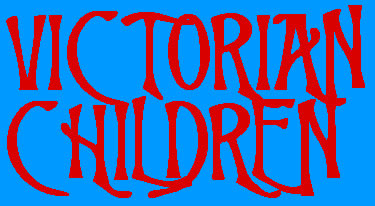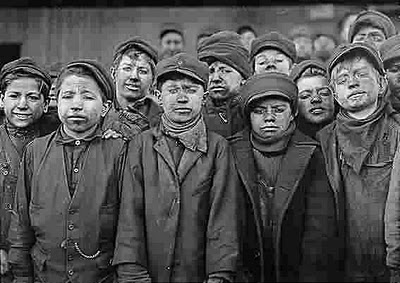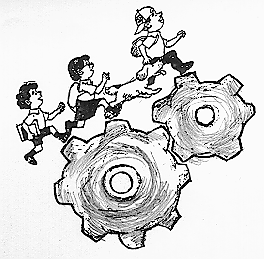
Childrens at work
Many families had 10 or more children. Sadly, many children died as babies, or from diseases such as smallpox and diphtheria. The children of rich families doesn't work, but the children of poor families have to work. They worked in factories and especially in the mines because the children were cheap and easy for them to introduced in this. The children started to work at the age of five.

What jobs did children do in mines?
Some children pushed trucks of coal along mine tunnels. They were called 'putters'.
'Trappers' opened and shut wooden doors to let air through the tunnels. A trapper boy sat in the dark, with just a small candle, and no-one to talk to.
Some children started work at 2 in the morning and stayed below ground for 18 hours. Children working on the surface, sorting coal, at least saw daylight and breathed fresh air.


New laws to protect children
People called reformers, such as Lord Shaftesbury (1801-1885), argued in Parliament for laws to stop child-work. Inspectors, called Commissioners, went into factories and mines. They talked to working children to find out the facts. These are three of the new laws passed by Parliament.
1841 Mines Act - No child under the age of 10 to work underground in a coal mine.
1847 Ten Hour Act - No child to work more than 10 hours in a day.
1874 Factory Act - No child under the age of 10 to be employed in a factory.


INDEX
